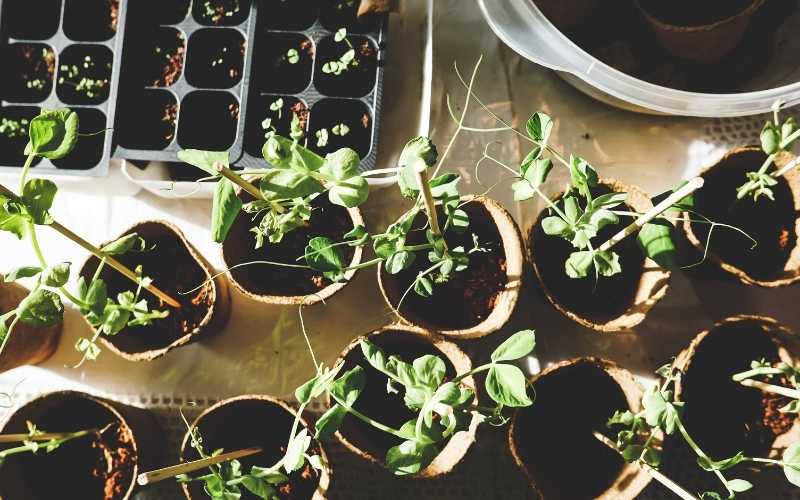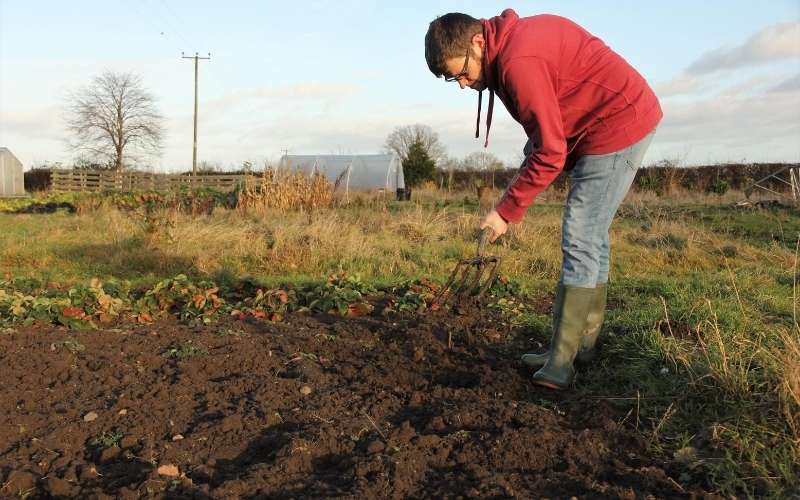Starting a garden around your home or in your backyard is one of the most important decisions you can make for yourself and for the environment as a homeowner.
In fact there’re so many rewards that come with starting a garden in your backyard. First of all, greenery adds beauty and some form of naturalness to your home. Once the garden is there, suddenly everything doesn’t look artificial anymore. It adds nature to the once barren piece of property previously occupied with only wooden and concrete structures you call home.
This greenery and nature also helps to beautify your home and surrounding, thus increasing its curb appeal. For instance when you plant a flower garden around your home, it results in flowers that blooms and creates beautiful colors that invites birds and other beautiful creatures.
A garden also serves as source of food, depending on the type you plant. No more buying all the greens, fruits and tubular veggies you need if you have them growing in your backyard.
Cultivating a garden around your home and working on it from time to time also provides you with some form of physical and mental exercise which is good for your overall wellbeing.
Apart from beautifying your home and providing some food, there’re so many other reasons to start growing stuff in your backyard, in containers or even in your balcony.
The issue is, most people don’t know where to start, and that’s okay. You don’t have to be a professional gardener to start growing some greenery around your home.
That’s why we’ve written this 11 step guide to help you get started and grow a beautify blooming garden around your home.
Related: 10 Best Backpack Leaf Blowers For Yard And Garden Cleanup
Table of Contents
1. Plan Ahead: Consider What to Plant
The first step to take when starting a garden is to consider what you want to plant and make the decision beforehand.
This step is very important because it’s going to determine the next steps you’ll take. There are different types of gardens or different kinds of plants you can grow.
You can decide to plant fruits, leafy vegetables, tubular vegetables like yam, flowers and herbs, or you can plant several types if you want.

Deciding on the type of garden you want to plant will help you know what to expect after you plant and the amount of work you need to put in to get that result.
For instance, when planting flowers, you can decide to plant annuals or perennials. Annuals needs to be planted yearly, but they bloom for longer periods of time. Perennials on the other hand bloom for shorter periods of time, but don’t need to be planted on a yearly basis. They just grow by themselves after each year provided they’re properly maintained.
So, make sure you put pen on paper and plan everything ahead before you carry out any manual work.
Related: 8 Best Dethatchers For Easy Lawn Thatch Remover
2. Start Small
If you’ve never planted or grown anything before, it’s important that you start small at your first try. You don’t want to start planting acres of land when you’ve never grown anything before.

Start small and learn the ropes first, so you can gain the experience. After having success with your first small garden, on your next attempt you can decide to take it up a notch based on your previous experience.
Failing after starting a small garden will not be as painful as starting a large one. In fact, a large garden can be quite difficult to maintain and care for. It can easily overwhelm you which as time goes on which can ultimately end in failure.
So, start small and get your feet wet first before going full throttle and planting your whole yard.
Related: 32 Gardening Tools Every Serious Gardener Should Own
3. Choose a Site or Medium

After choosing the type of garden you want to grow, the next step is to pick a place around your home to grow the garden. Put into consideration the type of garden you’re growing and the amount of sunlight the plants require to grow.
That is why step 1 is very important. Make sure you know what the plants need to grow well and blossom. If you don’t know, do thorough research. Ask other gardeners you know, or even the staff in your local garden center.
You can even decide to use containers instead of planting directly on the soil. You can do this if your soil is not good enough or if you don’t have enough yard space for the plants to grow.
Also, make sure the spot you pick to start it is a place you see every day. If you see your garden every day, you will be able to notice all the changes that goes on and take necessary steps to make sure every things goes well.
4. Clear the Site

It’s time to put on your gardening clothes and footwear. Get your gardening equipment and get to work. Once you picked a place, the next thing is to start preparing the place so that it can be ready to receive your plants.
That involves removing the turf from the place. Here you have two choices. The quickest one is to dig out the turf or sod especially if there’re some nasty weeds there. Then you can move on to the next step
On the other hand, if you still have some few months before starting your garden, you can save yourself the labor and smother out the turf in the place.
This you can do by just covering the turf with some sheets of newspaper. Make sure they’re thick enough. Put some compost over the newspaper and wait for about 3 to 5 months.
This will not only do away with the turf in your chosen location but it will actually turn them to manure which will enrich the soil there.
Related: 10 Best Weed Trimmers For Overgrown Weeds And Lawn
5. Prepare and Improve the Soil

Once the turf is gone, the next thing is to shift your attention to the thing underneath it. The soil. You have to prepare, improve and get it ready to receive the plants.
This usually involves adding organic matter to the soil, such as manure, compost, grass clippings and so on. This will improve the nutrients in the soil, which is very essential for a healthy garden.
If you want to go further than that, you can carry out a soil test on the soil to discover what the soil is lacking and how to add it to it.
6. Dig the soil or don’t

Digging is an important part of soil preparation, provided the soil is not too wet and sticky or too dry. Digging the soil and getting it raked out makes it easier for plants root to penetrate the soil.
It also helps mix the organic matter and soil together.
Related: The 6 Best Telescoping Hedge Trimmers For Trimming Tall Hedges
7. It’s time to pick your plants

You know the type of garden you want already, you’ve also picked a place in your yard to grow the garden. You know the condition of the place, how much sunlight it receives, the type of soil.
The thing you haven’t done is you haven’t picked the actual plants that you will grow in your garden. This is not so difficult though since you’ve already made a lot of preparations already.
You can simply go to your local garden center and pick the plants you like, that can adapt to the condition of the site you chose.
Checking plants catalogs or browsing the internet for plants is also fine.
8. Start planting

Once you’ve picked your plants, it’s time to put them in the ground. However, you have to be aware that plants grow by seasons.
So, you have to do your research and know when and how to plant each of the plants you’ve chosen. You should know how deep you should plant them, and how far apart they should be.
An easier method you can adopt is to buy young plants and transplant them in your garden.
9. Start watering

Plants need water to grow especially when they just started growing. So, make sure to water them daily. Transplants will quickly die off if they’re not watered properly in the early stages of transplanting them.
So, water them adequately. Remember not to water the plant leaves. Water the soil instead.
The best time to water is usually in the morning to minimize evaporation due to sunlight.
10. Control Weeds

You need your plants to grow, not weeds. So you have to keep weeds out of your garden. To do this, you need to start mulching. Cover the exposed part of the soil with mulch to deprive it from sunlight, make it impossible for weeds to grow.
If you planted annual plants, use mulch that decompose easily in months. On the other hand, if your plants are perennial plants, then you can use mulch that takes a longer time to decompose.
Mulching does not only prevent weeds from growing, but they also minimize evaporation of water from the soil, keeping the soil moist enough for your plants to thrive.
11. Maintenance

At this point, you’ve done the major work and your garden is set to grow. All you have to do now is to keep an eye on it, and provide proper maintenance when needed.
Water adequately and apply fertilizer as required. If you’re using solid fertilizer, then you should add it to the soil about halfway through the plant season.
If you’re using liquid fertilizer, you can apply it every month in order to promote a healthy growth in your garden.
Final thoughts
Like I said earlier, it’s not a question of whether you should start a garden. It’s a question of WHEN you’re going to start your garden.
The steps highlighted above are the steps you need to start a beautiful and thriving garden around your home.
The ball is now on your court. You can now start your own beautiful garden. As always, the question is when are you going to?

